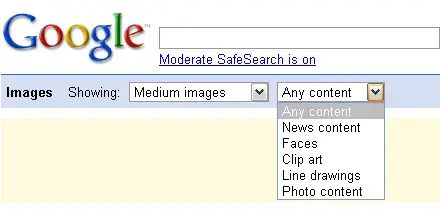“Diversity” and “inclusion” are today’s mottos that are highly advertised by the companies. But what should we understand from these words? And how can you see them really happening in your business, instead of accepting them only as slogans?
Corporations usually handle the diversity perfunctorily, for the sake of formality – what the authors describe as “Diversity 101”. They present themselves as diverse by pushing the non-white people’s into symbolic status, or by reluctantly choosing a woman as a board member. However, while decision-makers are still solely the white men who share the same points of view, this diversity means cursorily “dressing a window”.
Managers should perceive the absence of diversity and inclusion as a serious menace for the basis of the company, to be oppressed immediately. The company should act to adopt a sincerely inclusive culture, instead of demanding from minorities to be integrated by losing their characteristics.
The companies which truly embrace diversity and inclusion as an essential part of their company cultures are more creative and productive. Also, their employees feel more involved in their jobs and have higher salaries. Everybody gains when equality exists.
Try Audible and Get Two Free Audiobooks

Chapter 1 – More polarization increases, more diversity in business is needed.
All has been done. If you’re fed up with the political ideas of a relative, then you unfollow him/her on Twitter, remote him/her from your Facebook-friends list. Or that family member who always shares annoying Facebook memes. What an easy way of getting rid of them: click to unfollow, and you’re free from their terrible beliefs.
Why don’t you? Why do you have to bear the things that drive you crazy? Well, the thing is, even if you stop following your racist uncle, he will stay as much as racist. And when you leave him on his way, there will be nobody to oppose him. He will feel allowed to spout his racist views.
Diversity requires engagement with different perceptions. However, recently polarization in society has increased. Day by day we’ve lived in “silos” filled with people who share the same identity and standpoint. The outcomes of this trend in the scene of politics were once unimaginable: the UK has exited from European Union, and the US people have elected a president who is frankly anti-immigrant and created a platform that reflects their segregation from the rest of the country.
Social media greatly worsens this polarization, especially when it’s combined with the cookies that record our interests to make us see the contents we want, therefore “optimize” our internet experience. Before online media, the news sources of the people were newspapers and TV channels; nowadays they receive information by reading the posts on their homepages. Hence, they hardly meet opposite arguments, even worse, this information is mostly falsified or fabricated to serve certain ideologies.

Homogeneity steals the richness of our lives. In the business world, each team whose members are completely white men cannot escape from “group thinking” and strengthen blind spots. Being a lack of creativity, they aren’t well-prepared for tomorrow’s world. Furthermore, this system usually brings nepotism and the gender wage gap, accompanied by strangulation caused by nepotism and chasing away more capable human sources.
In this polarized atmosphere, companies should take action to transform their bureaus into truly diverse and inclusive offices where the workers can profit from different ideas of their colleagues and get engaged in their jobs. How it is possible to change this homogeneity? We’ll examine details in the following pages, but basically, it begins with facing unintentional prejudices.
Chapter 2 – Facing the prejudices, it’s a must to change our workplaces
A group of scholars from Princeton University showed two photographs to different people as a part of an experiment. In which, the participants were supposed to choose which photo portrayed a more capable person. Participants didn’t know but these were the photos of two candidates who run for the US Congress. Expectedly, the candidate that the participants had found more capable became more successful and complete the race with 70 percent.
But what’s the secret of looking competent? The way how we dress? Having no difficulty with the cameras? Usually, we cursorily judge people regarding their appearance. This is exactly what unconscious bias is, so our hasty judgments and thoughts limit our reasoning and falsify information.
Since we can’t always be aware of it, unconscious bias is dangerous. For instance, if the idea that women cannot be influential rulers is deeply settled in your inside, nothing can help you to see what a woman can do. You will unconsciously filter reality through your prejudice about women. And you’ll prefer to ease yourself by saying it’s the explicit reality, that candidate you’ve eliminated wasn’t suitable for the interests of the company. Maybe it’s true, but the thing is, she was never given a chance to prove herself! You’d already decided before she came for the interview.
It’s not difficult to guess how unconscious bias touches certain groups, such as women, minorities, persons with disabilities, etc. in business life. Their chance to be interviewed, employed, or having promotion is less than others.

Well, how to change it? Firstly, we should accept it. To say “I don’t care about colors” is just sweeping the problems under the carpet. After you admit your blind spots then you’ll ready to climb “the Ladder of Cultural Competence” as defined by Noel Burch. In the beginning, you’ll be “unconsciously incompetent”, but in the end, you’ll become “consciously competent.” This stage is tough. You perfectly see that you’ve fed your biases so far, but you don’t know how to get rid of them.
Once you acquire new abilities and change your attitudes, you’ll proceed to the following stage: “conscious competence”. At this moment use some tactics contradicting your biases. For example, an employee who generally hires white applicants could begin by conducting an anonymized recruitment process with a diverse hiring committee. As soon as you get used to naturally implementing these strategies, the final step will arrive in unconscious competence. Then you’ll be so honest with yourself about your unconscious bias as you’ll be truly determined and know how to keep them under control. Therefore, they won’t be able to reduce your work performance.
Chapter 3 – The gender wage gap should make men worry
In 2017, BBC director Tony Hall received some letters from 45 prestigious woman performers, which include complaints about the gender wage gap. Perceiving this inequality as a “female” matter of something only related to feminism, no man got involved.
We need to change this unresponsiveness. The gender pay gap is a profoundly serious issue that cannot be suspended. It’s highly related to the culture of a corporation. How accountable is the payment process of the employees? Are promotions given based on quality or nepotism and some old habits? How innovative is your company? Regardless of gender, each recruiter who gives importance to these values should feel uncomfortable when corruptions occur in the payment process.
Although discourse about gender equality is are abundant, the fact is that political determination to handle this inequality is incredibly low. For instance, the writers examined the fifty establishments announced by Times as having the highest number of women employees in 2017. Their study has shown that the companies having a tolerable note for paying equally formed only 6 percent of the list. Therefore, it can be argued that their so-called progress on gender equality is only a successful PR strategy instead of being a sincere parity between women and men.

Companies that want to stop inequalities have to decide on transparent policies. For example, publishing all the payments made for the employees is a new practice. Expectedly, this forces the companies to balance the payments. Also, it provides the employees with helpful information that they can use when negotiating for promotions and wage increases.
Equity between male and female employees will be achieved when the men in the direction consider gender pay disparity as a vital problem. Equity is favorable not only for the employees who are paid less than they deserve but also for the welfare of the whole company. Unless they stop disparity, they’ll lose talented people, and lack of transparency will demoralize the current employees.
Chapter 4 – Business gets harmed by homogeneity in the offices
Traditionally, the well-known bicycle race Tour de France awards both first and last bicyclists who reach the finish. The champion is dressed in a yellow jersey whereas the loser is awarded a red lamp, to give the message that they were catching fire in the back.
The champion’s gifts are so explicit that everyone can see. They showed their quickness, energy, and sporting skills. However, understanding the worth of losing cyclists is much more difficult. The loser showed other features that are as significant as the ones of the winner, such as persistence, endurance, and strength of mind. Both successful and failed cyclists carry different powers and complete the empty parts of each other.
In today’s business world, we should aim for differences, not homogeneity while forming teams. It can be more beneficial to look for team members with new standpoints even if they cause tensions in the team, instead of waiting for the members that easily assimilate into the current culture of the company. They are either the people that have different nationalities, genders, or different life conditions or the ones with special abilities and personalities. Introverts are not favorable candidates in the eyes of the employers; however, they might be a good advantage in a working atmosphere where all staff yells at each other.

Aiming for diversity is possible if you realize the significance of hearing different opinions, take all the essential actions to create a company culture that makes all the employees feel engaged in their jobs. If inclusiveness cannot be done, not only their images but also their market performance fall into danger.
More diverse teams mean more productivity for the business. McKinsey and Company’s researches indicate that the companies with a record of into the top 25 percent regarding gender diversity are 15 percent more tending to get high profits. In the case of ethnic diversity, this figure ascends to 30 percent.
What’s the point? In the companies that achieved inclusion, the employees are truly engaged with the whole compartment of the company. Besides, they’re more creative. Group thinking is rare in diverse teams; they confront opposing ideas, as a result, their discussions resulted in innovative products. Since they all stand in different points and perceive the world differently, such teams can easily mark each other’s faults and prevent any possible failure of the company. So, what’s the way of making inclusiveness real in the business world? In the following pages, we’ll issue the strategies.
Chapter 5 – Collecting information is the first step to be an inclusive leader.
A co-author of this book, Raafi-Karim Alidina records that whenever he goes to an airport, he always forces himself to smile at the airport personnel. The reason is that: Being a Muslim man, he will be considered as a danger, even a “terrorist”. Similarly, Brent Staples, a The New York Times columnist, used to hum a song by Vivaldi on his way of walking at night, because he found out that the white people on the route feared him. Mumbling a “white” melody eased their minds. These two men have enough knowledge about what minority stress is: Endless tries to look similar to the rest of the society, and convince everyone that they come in peace.
Endeavors for enhancing diversity in business are limited by organizing some seminars, for example, to make the minority employees flawlessly assimilate. However, the problem will remain if it goes this way. Indeed, minorities have already learned the ways to get fit in the society they live in, they always do it. So, not the minorities, but the men who are in charge of establishing principles of the company, particularly the white ones, have to learn how to adapt.

Establishing sincerely inclusive organizations is possible by transforming the organization’s culture, but in a way that includes all parts of the company. Thus, how can employers realize inclusiveness? Firstly, they should be aware of the real feelings of their employees concerning working in their company. Do they think their opinions or objections matter to their employers? Are they praised for their efforts, achievements? Does the company provide employees with occasions which help them improve their professional skills? Thanks to this kind of information, the companies can build an Inclusion Diagnostic that detects the behaviors that make the employees feel as they working in an inclusive organization and the ones that dissuade them to think as such.
Once the leaders have spent some time to discover the nature of their staff and pay attention to their thoughts, they should assess at which level diversity exists in their companies. What percentage of white people form your team? Ans straight persons? And people without a disability. Which angles are lacking? To proceed, the leaders need to meticulously assess the recruitment process and examine the system of giving promotions and monthly payments.
After collecting the information that’s mentioned so far, leaders can start to take serious actions that will transform their offices into more inclusive workplaces. Different features of each underrepresented group will entail different strategies. The key points for a certain career improvement differ according to the special needs of the groups. For example, LGBTQ+ employees state that it is critical to see a portrayal of the company by other LGBTQ+ personals during the hiring process, whereas employees with disabilities express the importance of flexible working hours and working places that are suitable for their handicaps.
Chapter 6 – Transformation is possible only if you get in motion. Culture is something you practice.
Currently, there are plentiful seminars about unconscious bias. Although this increasing consciousness is valuable, as the studies have proved, admitting that you have prejudices does not necessarily reflect on your behaviors. On the contrary, it might have the opposite effect. After completing the training people could feel satisfied and stop investigating their deep-rooted biases.
You need visible actions more than consciousness if you genuinely want to change the culture of your company. These actions you take should be regular and applicable for everyone to be entrenched in the daily operation of the company.
You can begin by altering your recruitment processes. Changing the canals that you use to publish your job ads is a step for it. For example, you might either post on LGBTQ+ sites or dispatch your advertisements to universities that wouldn’t normally be your preferences. To challenge your deep-rooted biases, you should evaluate the candidates with a committee, and ask them the same well- prepared interview questions.
Hiring the candidates with different profiles is, on one hand, giving them the impression that they’re respected on the other hand. Unless the company persuades the people that they keep the promises they once made, they cannot preserve their hires. The first thing that the leaders should aim for is forming a workplace where the employees work in a psychologically safe atmosphere. Therefore, they’ll feel welcomed to express their opinions and standpoints.

Inequality exists in the gatherings too; women and minorities are interrupted much when they’re speaking. One method to counteract this situation is embracing new strategies regarding the tone of language and attitudes that are suitable for meetings. Also, you can alternate the head of the meeting so that team members who are usually keeping their silence have a chance to guide. Furthermore, you could also assign a rotary “devil’s advocate” who is responsible for raising hard questions and stimulating the team.
Another pushing element for inclusiveness at work is organizing a mentorship program for employees coming from minority groups, which draws a certain route reaching career advancement and home office possibilities.
Most prominently, these arrangements should be effective over all parts of the company. Changing company culture demands a lot of effort and will be resulted in after a long process. So, leaders have to have partnerships with board members, managers, and other employees. Also, there will be a need for an accountable system in which the division of work is well-defined, and participants have good communication with each other.
Chapter 7 – Strategies for diversity and inclusiveness should be modified to specific industries.
The Queen raised British comedian Lenny Henry to the knighthood. But meanwhile, ITV News displayed another tape which shows another Black person being awarded. That was the wrong tape, the crew confused Lenny Henry’s ceremony with another occasion that includes another black man. This mistake reveals that the great majority of the TV News staff are white. In the case of Lenny Henry, we can see that their cultural potentials are too weak to understand that the tape they showed wasn’t the footage of Lenny Henry.
A careful examination of the specific industries shows how detrimental their insistence on hiring only the white employees coming from similar social backgrounds is. It also makes us realize how different industries face different difficulties on their way to reaching diversity and inclusion
For instance, since cultural businesses depend on freelancers that the employers hire unsystematically, they have difficulties to change in part. So, it is impossible to homogenize the hiring process. Also, these kinds of organizations function with patronage; the existing employees choose to hire their friends or former co-workers.
The innovative organizations extremely oppose suppression. Aiming to contact TV managers and other business directors, the authors needed to make a program that would be considered as bringing innovation, rather than hindering it. By working with managers, they tried to discover the reason for the lowness of Black representation and show them the fact that homogeneity barricades the creativity of programming.

However, the authors use a completely different method when they work with scholars. Since most universities were established hundreds of years ago, they preserve the ancient practices and severe hierarchy as a part of their institutions.
Also, universities are some of the establishments that have the most homogenous working atmosphere in terms of ethnicity. The percentage of African American faculty members of Harvard Kennedy School in 2015 was only 6.6 %. Academicians coming from minority groups face discrimination at each stage of their academic career, it begins with the admission process and maintains until awarding a scholarship or publishing an article.
So, how to stop discrimination at these establishments where discrimination has become embedded in institutional culture? The good thing about universities is that they are non-commercial centers of research and investigation. The authors ask their clients to implement creative reasoning to the issue of discrimination. By designing courses on multicultural proficiency, for example, as NYU Abu Dhabi did. Or inventing new methods of evaluating diversity in the business, like Inclusion Diagnostic and Welcome that were developed by the authors. Similarly, they tried to enlarge transparency and accountability of the universities, by collecting authorized public assurances to support women scientists.
Chapter 8 – Tech companies might lead the way in reaching diversity and inclusion
Search “three Black teenagers” on Google Images. Your page will be filled with lots of photos of criminals. Then repeat it for “three white teenagers”, this time you’ll have plenty of photos of good-looking young people.
Although technology has served as an answer to numerous problems, this case proves that it’s not non-biased. A study made by ProPublica indicated that an algorithm called COMPAS that used to guess how possible a sentenced person would again commit a crime, wrongly suggested that a Black person has two times more possibilities than their white equals to re-offend. So, people develop technology by pouring their prejudices, ideologies into the codes of the programs. This explicitly proves the crucial need to handle diversity in business.

Grand technology companies have declared their “whiteness” by arguing that the minorities don’t have essential formations and competence to be employed, and they’ve claimed a “pipeline problem.”
Some endeavors to challenge this have been done by Facebook and Microsoft. Both companies notably funded grants and educational programs designed to make women and minorities competent for tech jobs. The positive outcomes of the programs like Women Who Code have put additional value on the process of improving the field.
The real question isn’t “pipeline problem.” Statistics suggest that the numbers of minorities who have relevant formations such as computer science are more than the ones who are employed by a tech company. This labor source is ignored during the hiring process. The true solution to this problem depends on the tech company leaders who need to confront their unconscious bias. To recover from their failure in diversity in business, they will have to implement a “disruptive” but creative thinking for which the company is well-known.
Endeavors like Textio and Nottx are currently performing it. Textio is a program that removes symbols of the companies such as flags from the job descriptions so that prevent some groups from giving up applying because of the discouragement caused by those symbols. The Nottx anonymizes candidates to eliminate the damages of unconscious bias.
These programs might bring diversity and inclusion not only to the tech industry but also to a wide variety of sectors like finance and other industries that technology functions as a locomotive power.
Building an Inclusive Organization: Leveraging the Power of a Diverse Workforce by Stephen Frost Book Review
The companies that achieve diversity are more creative, more engaged, and also earn much. Leaders aiming to increase inclusion in their offices have to change company culture across all compartments of the company. We should get aware of the fact that diversity is a problem that the majority have to confront.
Consider diversity and inclusion as personal missions.
It is required to limit the meaning of words like diversity, if not, they don’t say much. To gain partnerships with your employees, you have to deal with them. Learn whether your team members have recently felt discriminated against. Thanks to this kind of information, the majority might develop empathy for the unpleasant experiences the minorities have in the business world.
Try Audible and Get Two Free Audiobooks
